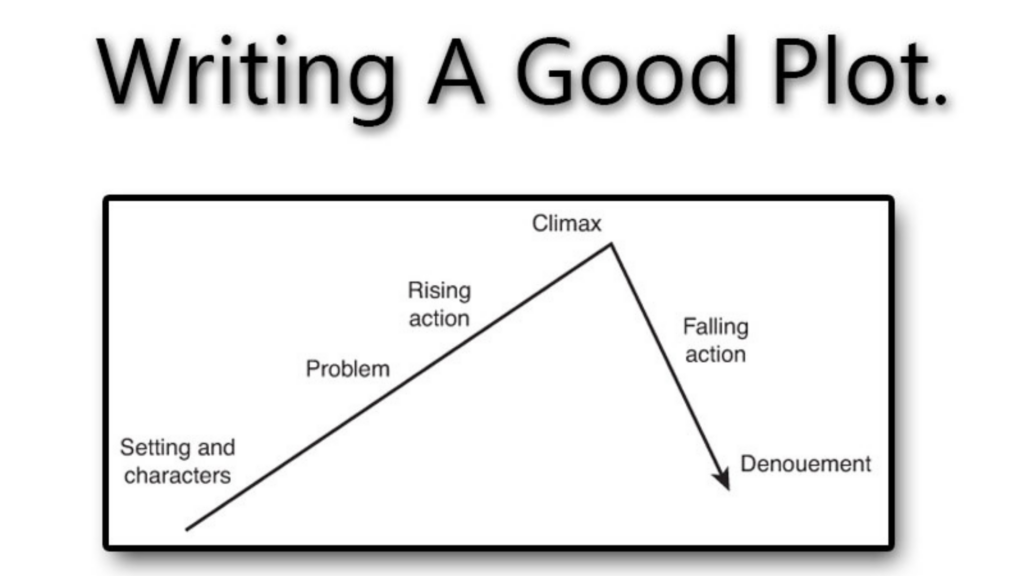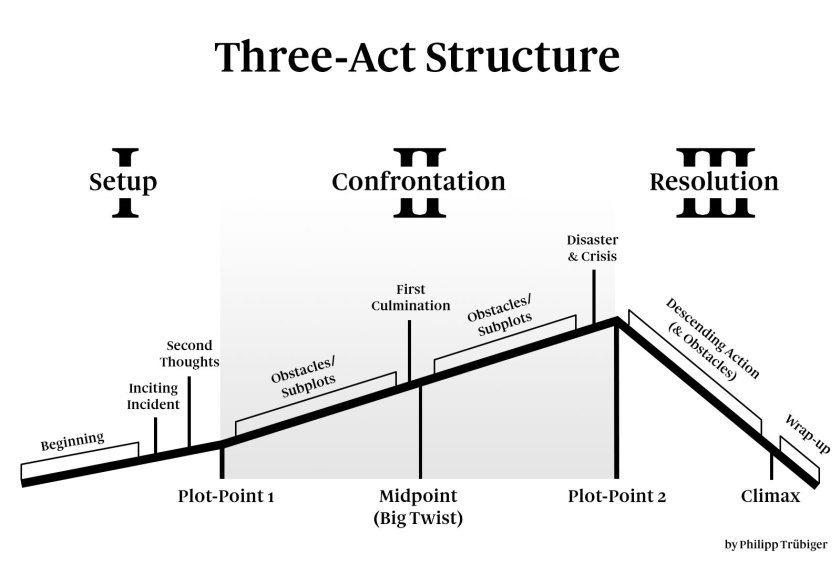Plot vs story has perplexed many of storytellers since the beginning of telling stories, so what’s the difference? The difference between plot and story can be a little confusing, but they are actually quite different.
What Is Plot in a Story?

In order to discuss plot vs story, we have to know what plot is. Plot refers to the sequence of events in a story. It’s what happens. Plots are one way to make your story more interesting. When you have a plot in mind, it’s time for some serious brainstorming!
The first step is deciding on the characters who will live through this drama and their backgrounds so they can provide necessary conflict or support throughout our narrative.
The events in a story are what make it interesting. In order to create an engaging plot, you need your characters and how they interact with each other as well as the world around them.
A good way of figuring out this part is by starting from their motives: What do these people want? Why does everyone care so much about what’s happening with them?
What Is Story?

Knowing what story is when talking about plot vs story will help a lot when you write your own. Story refers to the way events are told.
While plot tells what happens, story tells how it happens. Stories are all around us: in books, on TV and even real life.
Stories can be factual or they could just happen to you- like when your friend tells their story after going out drinking with some guys from work last night that ended up getting arrested for drunk driving (I know right!).
The point is not whether these events actually occurred; what matters most about telling stories like this one is how we arrange them following each other along on a particular journey.
Here are some story and plot examples:
For example, take the plot of Star Wars: A New Hope. The plot is basically as follows: young farm boy named Luke Skywalker learns that he is the son of the Jedi Knight Anakin Skywalker, who was believed to have died in battle some years earlier.
Darth Vader, a powerful Sith Lord and enemy of the Jedi, killed Luke’s father and now seeks to find and kill Luke as well. The story of Star Wars is told mainly through the plot, following Luke’s journey from farm boy to hero.
Another example is the plot of The Catcher in the Rye. The plot follows Holden Caulfield as he runs away from home and tries to find his way in the world.
The story is mainly about Holden’s inner thoughts and feelings, and how he deals with the various situations he encounters.
Plot refers to the sequence of events in a story, while story refers to the way those events are told.
It’s important to understand the difference between plot and story because they are two very different things. A good plot can make for a bad story, and vice versa.
A well-told story with a weak plot will still be more enjoyable than a poorly told story with a great plot. understanding the difference between these two concepts is essential to writing good fiction.
How To Write a Plot

Now that you know the difference of plot vs story, let’s talk about how to write plot. There are two main schools of thought when it comes to plot – plot vs story.
The plot school of thought focuses on the sequence of events and the mechanics of the plot. The story school of thought focuses on the characters and their development.
Whichever approach you take, it’s important to ensure that your plot is engaging and unique. There are a few things you can do to make sure of this:
– Make sure your plot has a clear goal or objective. This will help to keep your plot focused and ensure that the reader stays engaged.
– Make sure your plot is unpredictable. This will help to keep the reader guessing and engaged in your story.
– Make sure your plot has a satisfying resolution. This will leave the reader feeling satisfied and happy with the outcome of your story.
While plot is important, it’s not everything. Characters are key, as is setting and theme. In order for a story to really work, all of these elements need to come together in a coherent way. If one element is out of balance, the story will feel off.
It’s also important to remember that plot is not the same as story. A plot is what happens, while a story is what the plot means. In other words, a plot is the skeleton of a story, while the story is the flesh and blood.
Good plotting is essential for any writer, but it’s not the only thing that matters. With the aforementioned elements in place, your plot will be all the more effective.
While plot is important, it’s not everything. In order for a story to really work, all of these elements need to come together in a coherent way. If one element is out of balance, the story will feel off.
If you can ensure that your plot has a clear goal or objective, unpredictable plot and a satisfying resolution, you’re well on your way to writing an engaging and unique plot for your story.
Speaking of story, let’s take a look at what makes a good story.
How To Write a Story

One of the most important elements of any story is its characters. Characters are what drive the plot and engage the reader. They need to be well-developed and believable in order to make an impact on the reader.
Another important element of any good story is its plot. The plot should be well-developed and engaging, and it should have a satisfying resolution.
If you can focus on developing strong characters and a well-crafted plot, you’re well on your way to writing a good story.
And with that, you’ll be able to engage readers and keep them hooked until the very end.
Having a satisfying resolution is one of the most important things you can do to make sure your readers are happy with your story. So, make sure to focus on it when you’re writing your plot.
One last important element of a good story is the setting. The setting should be well-developed and help to bring the story to life.
So, what makes a good plot?
– A clear goal or objective
– Unpredictability
– Satisfying resolution
And what makes a good story?
– Well-developed characters
– Engaging plot
– Satisfying resolution
– Well-developed setting.
Now that you understand the difference of plot vs story let’s talk about premise.
What Is Premise?

A premise is the set-up of your plot. It’s what introduces the conflict or problem that your characters will be dealing with. In order to create a good premise, you need to understand your story’s genre and what type of story you’re telling.
Once you have a good understanding of your story’s genre, you can start creating your premise by introducing the main character and their goal.
The main character’s goal should be something that is achievable within the scope of your story. You also want to introduce the antagonist, or the person or thing that is preventing your main character from achieving their goal.
The plot of your story will revolve around your characters’ attempts to overcome the obstacles put in their way by the antagonist.
You want to keep your plot as tightly focused on your main characters and their goal as possible. Everything else in your story should be there to support your plot and move it forward.
Premises don’t reveal what happens pertaining to the events of the story and how they unfold. They’re just scenarios in which the stories are set. The Shining, is a case in point.
A family moves into an isolated hotel for the winter where the father is to serve as caretaker and falls victim to cabin fever and writer’s block. Meanwhile, his psychic son sees horrific images of the future and the family is beset by ghosts.
One of King’s best-known novels is also one of his simplest in terms of plot. When it comes to plot, there are three primary elements: inciting incident, rising action, and climax.
The inciting incident is the event that kicks off the plot and starts the story moving. It can be something simple, like a character’s desire for something or someone, or it can be something more complicated.
The rising action is the part of the plot where the tension builds. This is usually when the plot starts to get complicated as the characters face obstacles and challenges in order to reach their goals.
The climax is the peak of the story, usually the most exciting and dramatic event. After the climax, the story usually wraps up quickly with a resolution.
So, now that you know how to write a premise, let’s talk about plot structure.
Plot Structure

Most plots follow a three- act structure, which is not always rigid, but does provide a basic framework to help plot and structure a story.
The first act is typically setup, where the characters and plot are introduced, and the main conflict is established.
The second act is the confrontation, where the characters struggle against the obstacles in their way as they try to reach their goals. The third act is the resolution, in which the conflict is resolved one way or another and the characters reach their ending.
Some plots follow a different structure, such as the four- act structure, which adds a fourth act that wraps up any lingering plot threads and provides a sense of closure.
Other plot structures include five or six acts, or even non-linear structures that jump around in time.
Whichever plot structure you choose, it is important to make sure the plot moves forward and provides a clear progression from beginning to end.
One way to help plot your story is to come up with a plot arc, which is a series of plot points that move the story forward.
The plot arc can be anything from a simple list of major events to a more detailed outline of each scene in the story.
By plotting out your story ahead of time, you can ensure that the plot is well-developed and moves in a logical progression.
No matter what plot structure you choose, make sure the plot is strong and provides a clear resolution. Use the plot arc to help plot your story, and make sure all the plot points are relevant to the main conflict.
If you can make your plot interesting and exciting, readers will be hooked until the very end.
The first act is all about introducing your characters and setting up the plot. The second act is where the action kicks in and your characters are forced to take action to achieve their goal. The third act is the resolution of the plot and the characters’ journey.
While there is no one set way to write a plot, following a three- act structure is a good way to ensure that your plot is well-defined and has a clear beginning, middle, and end.
And that’s all there is to it!
Writing a plot doesn’t have to be difficult. Just make sure you understand your story’s genre and what type of story you’re telling and focus on introducing your characters and their goal in the premise. Then follow a three- act plot structure to ensure your plot is well-defined.
Plot Frame

Plot frame is a technique used by writers to organize the plot points of their story. It is a simple, yet effective way to keep track of the plot’s progress and ensure all important plot elements are included.
Novels and films tend to use several plot frames simultaneously, but one is usually dominant. The key to creating an effective plot is to make sure the plot frame supports the theme.
For example, in the movie “The Pursuit of Happyness”, the main plot frame is overcoming the monster. Chris Gardner’s character has to overcome significant obstacles, including a ruthless competitor and an unsupportive wife, in order to achieve his goal. This plot frame supports the theme of achieving one’s goals despite difficult odds.
In contrast, the movie “Schindler’s List” has a plot frame of the quest. Oskar Schindler has to go on a journey to find and save as many Jews as possible. This plot frame supports the theme of heroism in the face of evil.
It’s important to choose the right plot frame for your story because it will dictate how the plot progresses. If you have a story about overcoming personal obstacles, a plot frame of the monster would be more appropriate than a plot frame of the quest.
The plot frame is also important for creating suspense. If the audience knows the hero is going to succeed, the movie becomes boring. However, if the plot frame is one of danger or uncertainty, the audience will be glued to their seats until the end.
Choosing the right plot frame is essential for creating a successful story. Make sure to take the time to plot your story out carefully, and you will be on your way to writing an unforgettable tale.
Hopefully, now that we covered the difference of plot vs story and the essential elements that accompany them, it’ll help you in writing your scripts more effectively.
Related:


Leave a Reply